| Back to Back Issues Page |
 |
|
Bangkok Travelbug March 12 Khon Kaen City attractions February 24, 2012 |
| Hello
Khon Kaen City Khon Kaen, which is about 460 km from Bangkok, is a medium sized city with a population of about 150,000. It’s pleasant, relatively uncongested with all the modern facilities a visitor would require. Like Bangkok and the other provincial capitals, a city pillar is raised and blessed before the construction of the city. On completion of the city, a City Pillar Shrine is built. 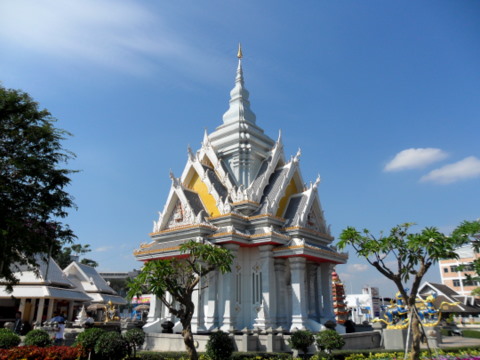
City Pillar Shrine, Khon Kaen The date, timing and location of these shrines are based on astrological calculations. The shrine is revered as a holy site where many residents go to pray. Please see Bangkok’s City Pillar Shrine. Another feature of provincial capitals is the clock tower located in the city centre. Khon Kaen City clock tower is something special. Notice the tubular structures on either side of the tower. 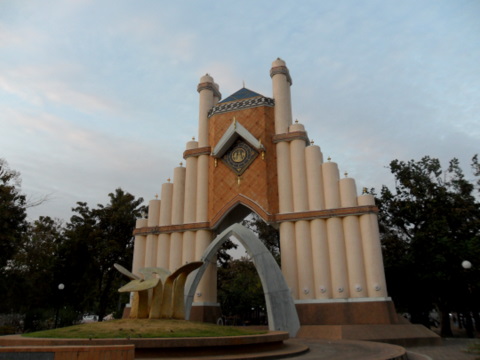
Khon Kaen City clock tower They are shaped like the traditional bamboo organ of Issarn, "khaen". 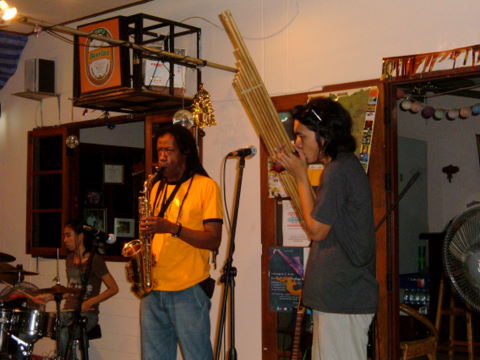
Playing the "khaen" Khon Kaen is also the location of the largest university in Issarn and the third largest nation-wide. Khon Kaen University has 24,000 undergraduates, 25 halls of residence, 17 faculties, a hospital and several research centres. The sprawling campus covers over 900 hectares or 2,223 acres! 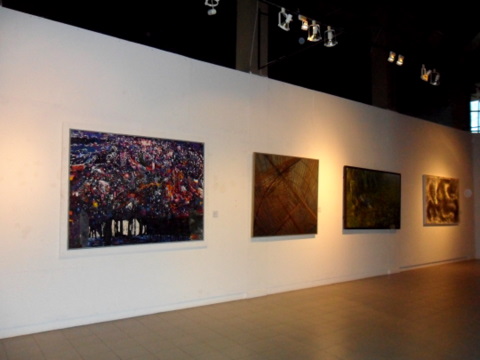
Arts and Cultural Centre, Khon Kaen University The city’s central location makes it a natural transport hub for travel to other parts of Issarn. Buses from Khon Kaen go to various parts of Issarn and Thailand like Udon Thani, Mukdahan, Chiang Mai, Nong Khai, Loei and even Rayong on the eastern seaboard. Table of contents Bueng Kaen Nakhon Bueng Kaen Nakhon is a huge lake south of the city centre. The lake measures 1.5 km from north to south and almost 700m at its widest point from east to west. A road goes around the lake where there are several restaurants and resorts, temples and Chinese shrines. 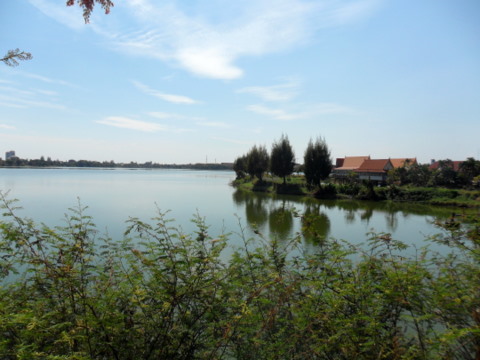
Bueng Kaen Nakhon There’s a park at the northern end of Bueng Kaen Nakhon build to commemorate the 200th anniversary of the city. It was on the shores of this lake that the first settlers came in 1789 to establish a township which later grew into Khon Kaen city. 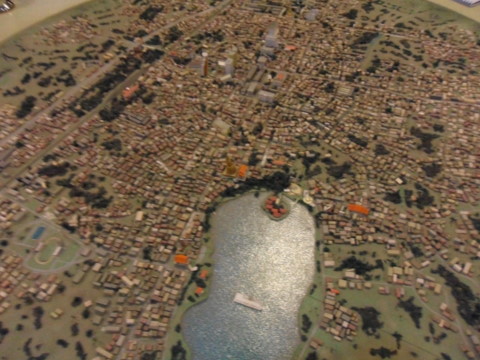
3-D map of Bueng Kaen Nakhon and the city viewed from the south Khon Kaen City Museum is located within this park. Table of contents Hong Mun Meng – Khon Kaen City Museum Hong Mun Meng, Mueang Khon Kaen or Khon Kaen City Museum is located on the northern shores of Bueng Kaen Nakhon under the terraces of the sports stadium. The museum covers the history of Khon Kaen, the people, the traditional way of life, art, architecture, customs and festivals in the province. The aim of this museum is to preserve the traditional wisdom and way of life of the early settlers of Khon Kaen for future generations, not just the residents of Khon Kaen but for other Thai and foreign visitors as well. Let’s take a pictorial tour of some of the exhibits in the Khon Kaen City Museum. 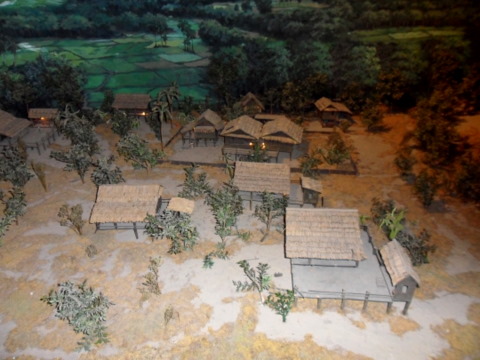
Model of traditional Issarn village with rice fields in the background 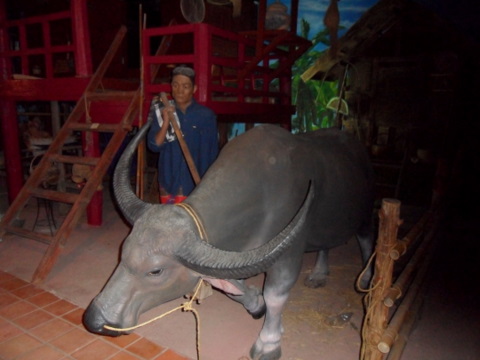
Country life depicted by life-sized models 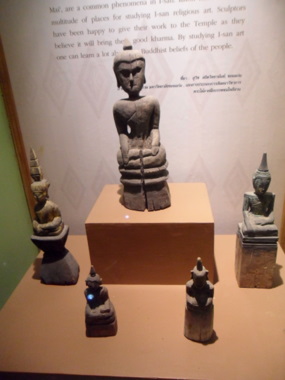
Religious art 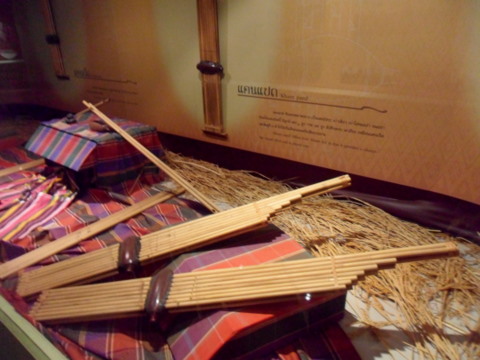
A familiar sight by now the traditional bamboo organ, "khaen" 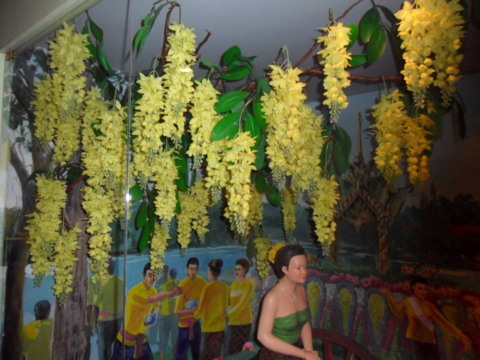
Dork khoon, the flower that blossoms around April at Songkran 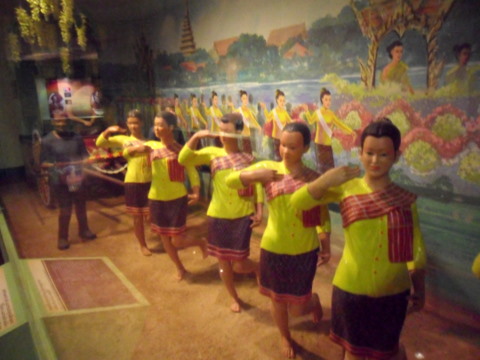
Celebrating Songkran, the Thai New Year, in Khon Kaen But it was this section on famous personalities from Khon Kaen that caught my eye. Table of contents Khon Kaen’s famous sons Three of Khon Kaen’s famous sons are well-known to the rest of the world, depending of course on your age and interests. Paradon Srichaphan Tennis fans would definitely remember Paradon "Ball" Srichaphan who started tennis at age of six. He turned professional in 1998 at 19 and was ranked the World number 9 in 2003 when he was 24. He remains the highest ranked men’s tennis singles player in Asia. His trademark "wai" to all round the tennis court before and after matches has endeared him to viewers and fans round the world. 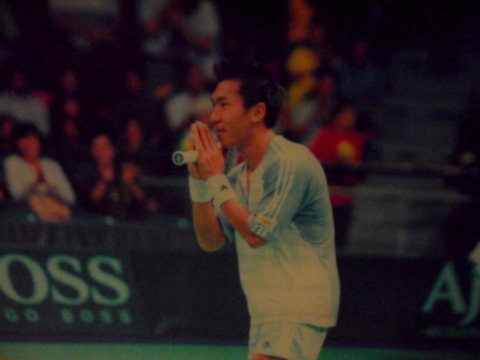
Paradorn "Ball" Srichaphan Paradon remains the best known Asia tennis player internationally; voted "Thai of the Year" in 2002, earned a spot on the cover of Time Asia's magazine in April 2003, chosen as one of its 29 Asian heroes for 2003 and carried his country's flag in the opening ceremony of the 2004 Athens Olympics. He retired from professional tennis in June 2010 owing to injuries and announced his entry to politics in April 2011. However he didn’t get elected in the 2011 elections. Somluck Kamsing The two boxers, one Thai and the other Bulgarian, were slugging it out at the finals of the featherweight division at the Atlanta Olympics in the USA in 1996. When the results were announced the Thai raised his hands in jubilation, gave a "wai" all around and proudly raised a photo of HM the King over his head as he pranced around the ring. 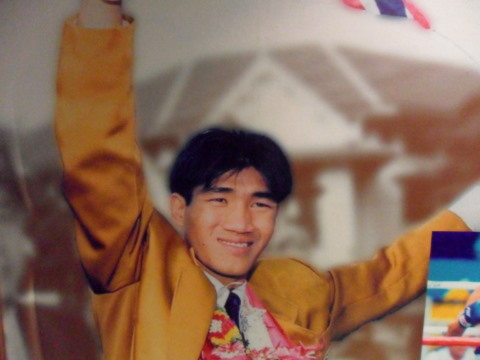
Somluck Kamsing Thailand had every reason to be proud of Somluck Kamsing when he won the gold medal that night. He was the first Thai athlete to win an Olympic gold. Somluck Kamsing is no stranger to the Asian boxing scene. He won a gold medal at the Asian Games in Hiroshima, Japan in 1994 and another at the Asian Games in Bangkok in 1998 during which he lit the torch for the opening ceremony. His career took a different turn when he went into movies and singing in 2006 and later kick boxing in 2011. Field Marshall Sarit Thanarat Older readers familiar with Thai politics in the late 1950s and early 1960s would have heard of Field Marshall Sarit Thanarat. On 13 September 1957, Sarit then the Commander of the Army demanded the resignation of the government headed by Field Marshall Phibun Songkhram. 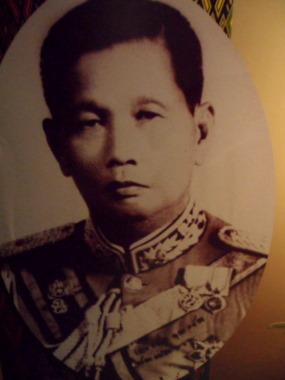
Field Marshall Sarit Thanarat When the government didn’t back down, a lightning coup at dawn the next day brought down them down. Sarit had little patience for the fractious and chaotic politics of the day which he felt was caused by alien institutions that didn’t suit Thailand. On 20 October 1958 he suspended the constitution and declared martial law. Political opponents, Communists or otherwise, were arrested. Law enforcement was draconian. Arsonists and other criminals were summarily shot in public. So were some political opponents. The general population tired of the growing lawlessness in the country accepted these drastic measures. I remember a friend’s father who fondly recalled the crime-free days when Field Marshall Sarit was Prime Minister. With the US military build-up in Thailand, the local economy grew. There were significant improvements in rural development and education. The rural north-eastern region benefitted from new highways, improved irrigation, electrical supply and agricultural research. Compulsory education was increased from four to six years of primary schooling*. More secondary schools were built, more teachers were recruited and two new regional universities were opened in Chiang Mai and Khon Kaen. It was Sarit who designated the second Saturday of January to be National Children’s Day, the day I visited Khon Kaen. Sarit died on 8 December 1963 to end a five year tenure which was paradoxical and controversial. He was actually born in Bangkok and his mother came from Mukdahan. I can’t ascertain which province his father came from. Whatever the case, Khon Kaen remembers Sarit well as there’s a monument in his honour in the town centre near the city clock tower. 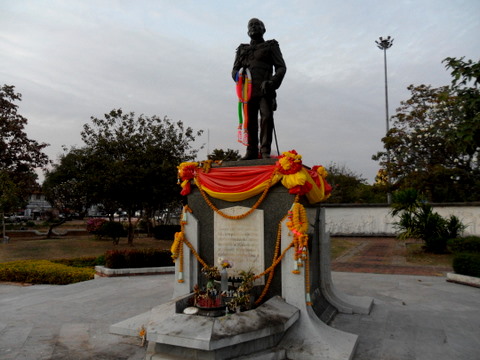
Field Marshall Sarit Thanarat Monument** Note: *The current Thai education system provides nine years of compulsory education with 12 years of free basic education guaranteed by the Constitution. **Monuments for Field Marshall Sarit Thanarat can also be found at the Mukdahan Tower Museum, Mukdahan and the Infantry Museum at Thanarat Infantry Camp, Prachuap Khiri Khan. Table of contents Wat Nong Waeng As we were driving around the south western shores of Bueng Kaen Nakhon, I noticed this multi-tiered pagoda with each tier lined with gold. 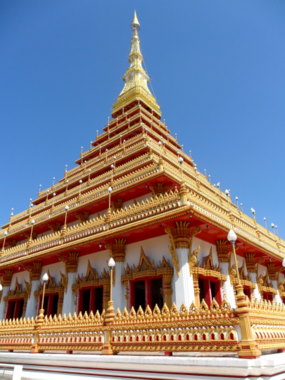
The golden tiers of Wat Nong Waeng We stopped to explore this nine-story pagoda that’s not only a temple but a museum as well. 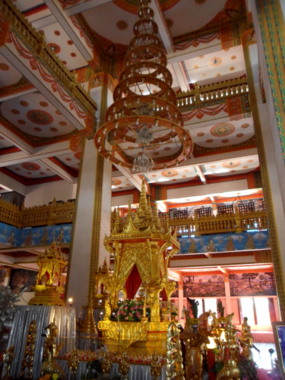
Altar on the ground 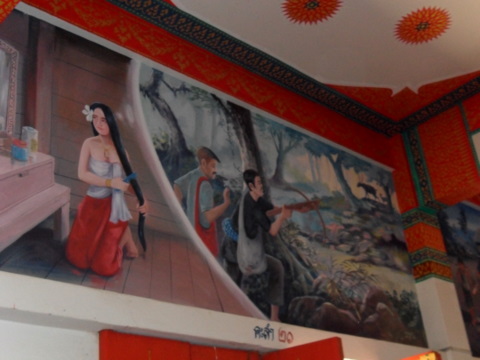
Murals on walls depicting traditional way of life 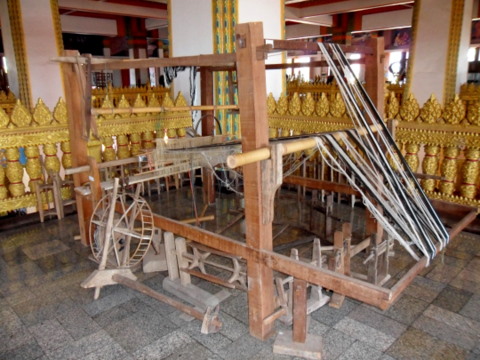
Old weaving loom The temple is beautifully decorated both on the exterior and interior. 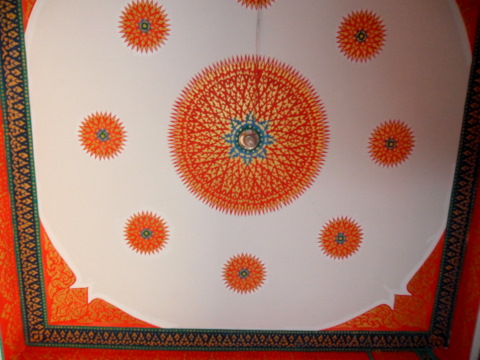
View of the ornate ceiling The corridors around each floor allow visitors to get a panoramic view of the city and to admire the intricate art work gone into building this temple. 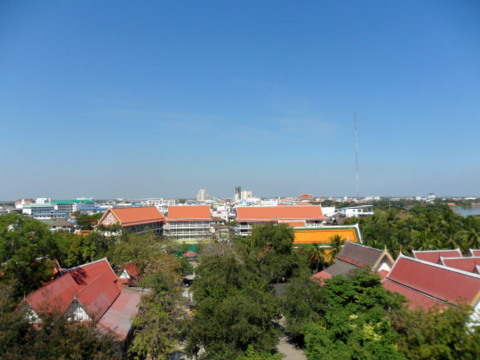
Khon Kaen City viewed from Wat Nong Waeng 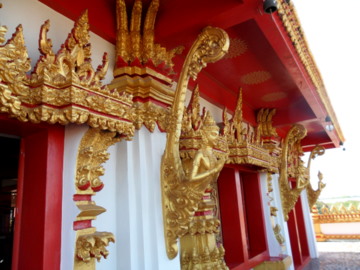
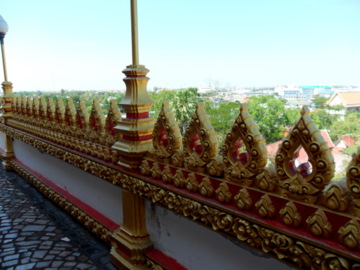
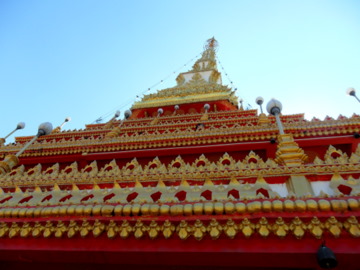
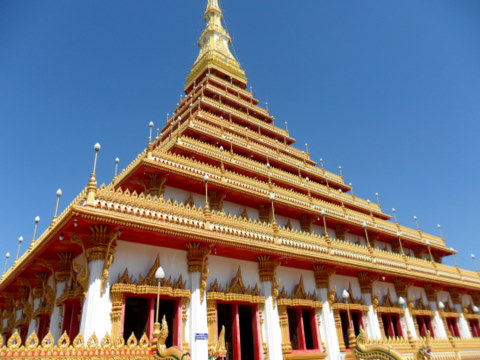
Wat Nong Waeng These are just some of the attractions which I managed to visit during my two-stay in Khon Kaen City. It would take several more visits to discover the other cultural and historical treasures of this city and its surroundings. Table of contents Map of Khon Kaen City View Map of Khon Kaen city in a larger map Getting to Khon Kaen city To get to Khon Kaen, please see directions given in getting to Khon Kaen in the previous issue. Map of Bueng Kaen Nakhon View Map of Bueng Kaen Nakhon, Khon Kaen in a larger map Opening times of Hong Mun Meng, Khon Kaen City Museum The museum is open every day except Mondays from 1200 – 2000 hours. Admission fees are 20 baht for Thais and 90 baht for foreigners. Where to stay – hotels in Khon Kaen Please see hotels in Khon Kaen for the hotels in the city area. Here are some of the reasonably priced hotels with walking distance of the Khon Kaen Bus Terminal. Bussarakam Hotel Kaen Inn Hotel Kaen Nakhon Hotel Piman Garden Hotel Table of contents Next month Amphur Chonabot - Khon Kaen’s Thai silk district 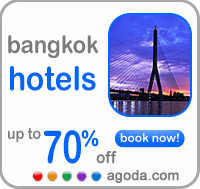

If you enjoyed reading this e-zine, please forward it to a friend. If you received this from a friend and found it interesting, please subscribe at Bangkok Travelbug. What you think of the Bangkok Travelbug? We love to hear from you What other subscribers have said Till next month then. Eric Lim Find us on Facebook Stay updated with what’s new at Tour Bangkok Legacies. Copy the link below and paste it into your Google Reader, NetNewsWire or your favorite feed reader. https://www.tour-bangkok-legacies.com/tour-Bangkok-legacies.xml If you use My Yahoo! or My MSN, head over to my home page and click on the button for your favourite Web-based feed reader. Visit our home page at Tour Bangkok Legacies. Copyright@2008-2009 Tour Bangkok Legacies All rights reserved |
| Back to Back Issues Page |